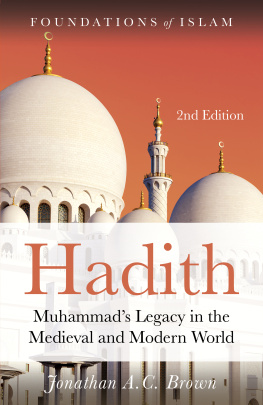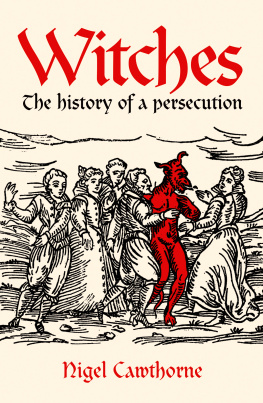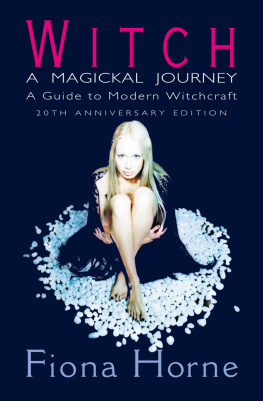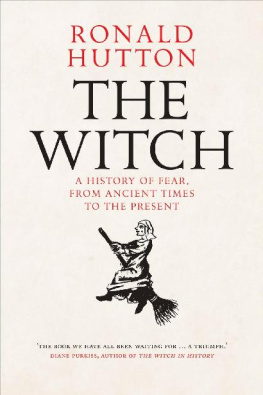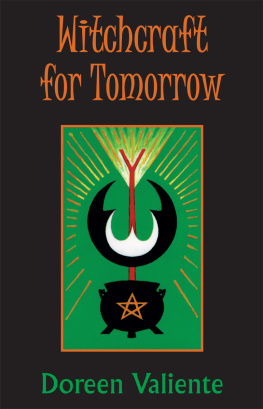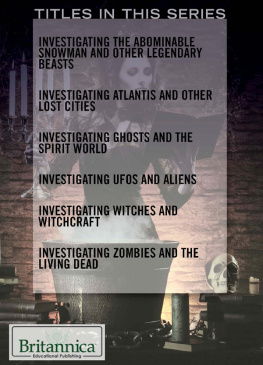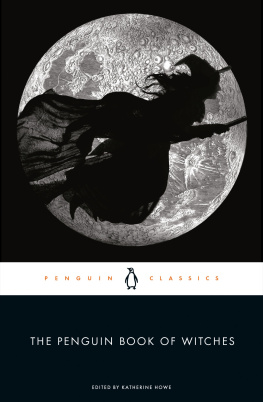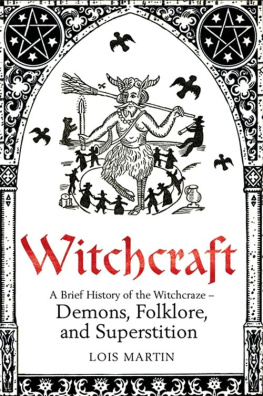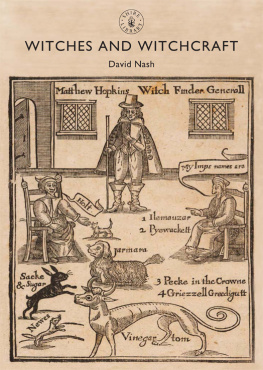

Jasmine Hurst, Julie Chirila, Bernard Browne
C ONTENTS
Medieval folk had long believed that the Devil was carrying out his evil work on earth with the help of his minions, and in 1484 Pope Innocent VIII declared this to be the truth in his papal bull Summis Desiderantes , which promoted the tracking down, torturing and executing of Satan worshippers. However, it was perhaps the reign of the son of Mary, Queen of Scots, James VI of Scotland and I of England that could be described as the age of witchcraft in Great Britain. During the Tudor and Stuart period, Essex was an extremely religious county, and everyone including the great, the wise and the learned believed in witches. James VI of Scotland was a staunch Protestant who had narrowly escaped death in the winter of 1589 during strong winds and huge waves that severely buffeted his ship while on the North Sea. He believed, having been exposed to witch-hunting while in Denmark, that he was the target of a satanic conspiracy by sorcerers and witches who used black magic because of the way the ship behaved in the storm.
Upon his return to Scotland, James put into effect the practices carried out in Denmark and most of the Continent, namely the witch trials, and so began the wholesale persecution of witches.
As his paranoia about the Devils plot to kill him grew, James personally interrogated witches from the town of Trenton, including Geillis Duncane, Agnes Sampson of Paddington, Agnes Tompson of Edinburgh, James Fian (alias John Cunningham), Barbara Napier and Effie MacClayan, all of whom he believed to be Satans students. On his orders they were tortured to confess their part in plotting his demise. Following this he wrote a three-part working of his studies titled Daemonologie , which was published in 1597 and became something of a handbook for witch-hunters for identifying and destroying witches.
In 1604 he repealed the statute introduced by Elizabeth I, under which hanging was the punishment for those convicted of causing death by witchcraft, and replaced it with a more severe charter, that simply the practice of witchcraft was enough to cause a person to be hanged. Between 1603 and 1625 there were about twenty witchcraft trials a year in Scotland nearly 450 in total. Half of the accused were found guilty and executed.
The legacy of Jamess Daemonologie continued throughout the seventeenth century and led to the torture and execution of hundreds of women in a series of infamous witch trials. No one knows exactly how many died during this period, such as at the Pendle trial of 1612, or how many others were killed in cases that never came to court.
The fear of witches as the allies of Satan and his demons grew because of the hatred between the rival factions within the Church, when the Protestants and Catholics were literally at each others throats. The urge to eliminate evil spread very rapidly across Western Europe, and in France and Germany tens of thousands were sentenced to a terrible death. Witch-hunting was also widespread across Scotland and England, but most notably in Essex, which became the hub of witchcraft activity. Between 1560 and1680 there were over 700 people involved in cases of witchcraft in Essex, either as a suspect or a victim, and of these over 500 were prosecuted at the assizes, quarter sessions, or ecclesiastical courts. In 1645 alone, there were thirty-six witch trials in Essex.
Political and religious chaos reigned throughout the period of the English civil wars (164251) and it was against this background of religious upheaval, caused in part by the Protestant Reformation and the Catholic Counter-Reformation, that the previously unheard-of Mathew Hopkins of Manningtree assumed the title of Witch-finder General in 1645. Witch-hunting throughout England was a judicial operation, but occasionally agitated villagers would take justice into their own hands, executing suspected witches in a vigilante style. However, after Hopkins took on the witch hunts, this rarely happened. His reputation spread far and wide and he had a profound impact on those around him. No one was safe from an accusation of witchcraft and marginalised women bore the brunt of it. Hopkins made a very lucrative living from it.
Note on the text : I have used the term English civil wars in the plural in this book because although it is recognised as one war, between 1642 and 1651 there were, in fact, three separate wars. The 164246 and 164849 wars pitted the supporters of King Charles I against the supporters of the Long Parliament, and the conflict of 164951 saw fighting between supporters of King Charles II and those of the Rump Parliament.
ONE
The Stuart period of British history refers to the period 16031714 in England (in Scotland it began in 1371). Elizabeth I, the last of the Tudor monarchs, died on 24 March 1603. Having never married, she had no descendants and so her two kingdoms of England and Ireland were left to be ruled by her closest heir, the Scottish king James VI.
Jamess greatest fear in life was a violent death. His childhood and adolescence were unhappy, abnormal and precarious; he had various guardians, whose treatment of him differed widely. Though his education was thorough, it was heavily weighted with strong Presbyterian and Calvinist political doctrine, and although he was highly intelligent and sensitive, he was also shallow and vain. In 1582, he had been kidnapped by Scottish nobles and only escaped the following year. This kept Jamess fear for his life at the forefront of his mind.
A suitable queen was found for James in Anne of Denmark, and they were married by proxy in July in 1589. Arrangements were then made for the new princess to come to England, but as she set out, she was detained on the coast of Norway by a violent storm. James sailed to Upsala, and, after a winter in the north of the Continent, brought his bride to Scotland in the spring of 1590, but not without encountering more rough weather.
There were rumours that plots had been made against James over his alliance, and witches were accused of attempting to drown him by calling up a storm while he was at sea with his new wife. Several people, most notably Agnes Sampson, were convicted of using witchcraft to send storms against Jamess ship. James became obsessed with the threat posed by witches and, inspired by his personal involvement, in 1597 he wrote the Daemonologie , a tract that opposed the practice of witchcraft.

King James I of England and VI of Scotland, by John De Critz the Elder.
The infamous Gunpowder Plot to blow up the House of Lords during the State Opening of Englands Parliament on 5 November 1605 further endorsed his fear and paranoia, and he signed an order that the captured conspirators should endure the minor tortures first and that the torturers should then move on to the more extreme measures to extract a confession. The public execution of those conspirators who were caught was a stern reminder of what would happen to anyone else foolish enough to involve themselves with treason.
The Stuart period was the beginning of a dramatic gap between the rich and the poor in England. At the top of society were members of the nobility, who owned huge amounts of land and commanded a lot of political power and influence because the government could not keep up with the rising costs of the civil wars, so had turned to them for support. The rents from royal lands could only be raised when the lease ended, which placed MPs in the position of refusing to raise money unless the king bowed to their demands.
Next page


